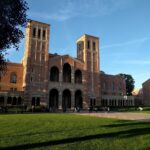Educrats Spin Poll
The Gallup poll released on Tuesday will probably be promoted by public school officials as evidence that they are doing a great job but the survey requires close examination.
“In contrast to the public’s pessimistic view of [No Child Left Behind] NCLB, the poll finds strong support for the public schools,” according to Phi Delta Kappa International. PDK conducted the poll in conjunction with the Gallup organization.
Clearly, the poll takers harbored an animus towards NCLB. Thus, it came as something of a surprise when PDK executive director Lowell Rose admitted, “Test scores have gone up and I credit NCLB and they have gone up among blacks and Hispanics.”
Actually, one of the poll questions was, “Let’s say that large numbers of public schools fail to meet the requirements established by the NCLB law. In your opinion, which would be more to blame for this—the public schools themselves or the NCLB law?”
Nearly half—48 percent—blamed the public schools while less than half—41 percent—blamed the law itself. Nonetheless, Dr. Rose concluded that, “The public holds schools blameless.”
Two-thirds of those polled did not have children in public schools. “Any probability survey will show you that a majority of Americans have no children in school,” Frank Newport of Gallup said in a press conference on Tuesday at the organization’s Washington, D. C. headquarters.
Gallup and PDK did break out the responses of public school parents in the released survey results, with one notable exception. The exceptional finding showed that 60 percent of those surveyed opposed vouchers, a proportion close to the ratio of respondents without school-age children.
If this poll sounds like it was designed by school administration officials, that’s because it was. Five of the nine notables who worked with Alec Gallup, heir to the family poll, in designing the questionnaire were at the press conference.
Four of those five were public school careerists. The fifth was a congressional committee staffer until the Republicans took over Congress.
For example, Dr. Rose is executive director of the Indiana Urban Schools Association and an adjunct professor at the Indiana University School of Education. Likewise, Jo Ann Fujioka, who chaired the meeting, “worked for 26 years in the Jefferson County school system in Golden, Colorado.”
Still, as happens in just about any poll, the results may not have been what the survey designers expected. For instance, three-quarters of survey respondents thought that teaching to the test was a bad thing, a conclusion that the National Education Association would agree with.
But less than a quarter of public school parents think inadequate funding is the main problem facing public schools, despite the NEA’s best efforts to convince them that that is the case.
“Parents attribute problems in schools to other schools, not their own,” Miss Rossi Ray-Taylor of the Minority Student Achievement Network observed. Miss Ray-Taylor was formerly the superintendent of the Ann Arbor public schools in Michigan.
Less than a quarter of public school parents polled would give an A or a B to public schools nationally while half would give that grade to their local schools. As it happens, half of those polled were from suburban areas with the “best” public schools.
One-quarter of survey respondents hailed from the urban areas that account for the highest education spending, number of school employees per capita and dropout rates.
Nevertheless, two-thirds of the total number of public school parents that PDK/Gallup polled would give As and Bs to the schools that their oldest children attend, but then that might be a reflection of the grades that those students receive. “In our better private universities and flagship state schools today, it’s hard to find a student who graduated from high school with much lower than a 3.5 GPA, and not uncommon to find students whose GPAs were 4.0 or higher,” Elon University journalism professor Michael Skube pointed out in a recent Washington Post op-ed.
“They somehow got these suspect grades without having read much.” The Gallup/PDK findings do not contradict this observation:
54 percent of public school parents say that elementary school curriculum is not hard enough.
67 percent say that high school classes are too easy.
Half—50 percent—agreed to the statement that “The school curriculum in your community needs to be changed to meet society’s needs.”
Malcolm A. Kline is the executive director of Accuracy in Academia.




